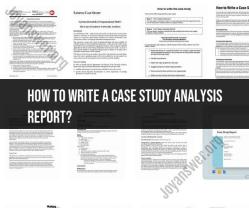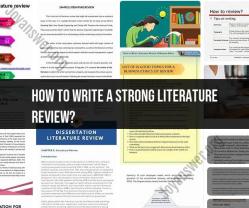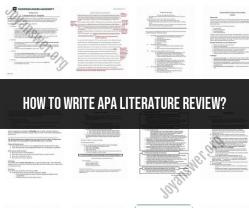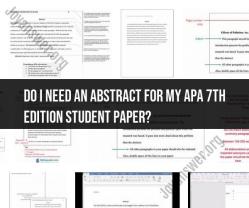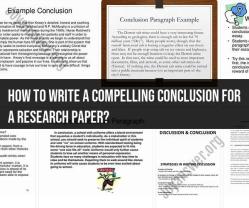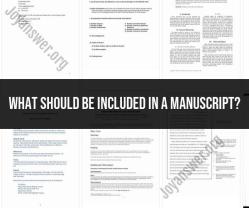What should be included in a manuscript?
A well-structured manuscript for academic or scientific publication typically includes several essential components. While the specific requirements may vary depending on the journal or publisher, the following elements are commonly included in a manuscript:
Title Page:
- Title of the manuscript: Should be concise, descriptive, and accurately reflect the content.
- Author names and affiliations: List all authors and their respective institutional affiliations.
- Corresponding author information: Include the name, email address, and ORCID iD (if applicable) of the corresponding author.
- Running title: A shorter version of the title used as a header on each page.
- Keywords: Provide a list of relevant keywords or phrases for indexing and searchability.
Abstract:
- A concise summary of the study's objectives, methods, results, and conclusions.
- Typically, abstracts are structured and follow a specific format, such as Introduction, Methods, Results, and Conclusion.
- Provide background information and context for the study.
- Clearly state the research question or hypothesis.
- Explain the significance of the study and its contribution to the field.
Methods:
- Detail the research design, methodology, and data collection procedures.
- Include information about participants, materials, instruments, and data analysis methods.
- Be specific and transparent to allow for replication.
Results:
- Present the findings of the study.
- Use tables, figures, and graphs to illustrate key results.
- Provide statistical analyses and relevant data.
Discussion:
- Interpret the results and discuss their implications.
- Compare findings with existing literature.
- Address limitations of the study.
- Offer suggestions for future research.
Conclusion:
- Summarize the main findings concisely.
- Reiterate the significance of the study.
References:
- Cite all sources, including scholarly articles, books, and other references.
- Follow a specific citation style (e.g., APA, MLA, Chicago) as required by the journal.
Acknowledgments:
- Thank individuals or organizations that contributed to the research but are not authors.
- Mention sources of funding and support.
Tables and Figures:
- Include tables, figures, charts, and graphs that enhance understanding of the content.
- Number and label each table and figure, and provide captions.
Supplementary Materials (if applicable):
- Append supplementary materials, such as additional data, code, or detailed methodologies, in a separate section.
Appendices (if applicable):
- Include appendices for detailed information that is not central to the main text but may be of interest to some readers.
Ethical Considerations:
- If applicable, include a statement on ethical considerations, such as approval from an ethics review board and informed consent from participants.
Conflict of Interest Statement:
- Disclose any potential conflicts of interest that could influence the research or interpretation of results.
Author Contributions:
- Specify the contributions of each author to the manuscript, including their roles in research, writing, and data analysis.
Funding:
- State the source(s) of funding for the research.
ORCID iDs (if applicable):
- Include ORCID iDs for all authors to uniquely identify researchers.
It's essential to consult the specific author guidelines and requirements of the journal you plan to submit to, as these can vary widely. Adhering to the journal's formatting and submission guidelines is crucial to ensure that your manuscript is reviewed and published successfully.


